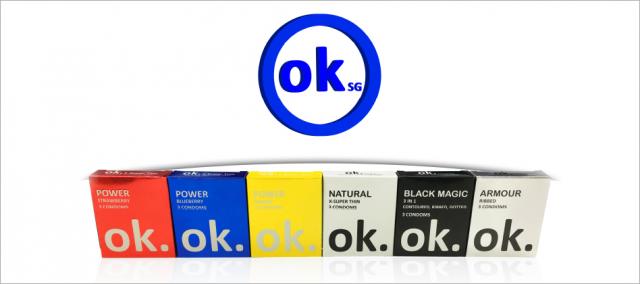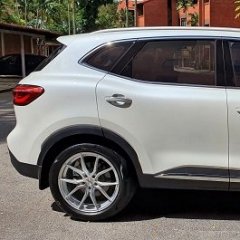Search the Community
Showing results for tags 'Active'.
-

BMW goes off speeding donning another car's licence plate!
chitchatboy posted a blog entry in MyAutoBlog
We thought things like this only happens in the movies but as it turns out, there are people doing this in real life as well! As seen on a Facebook post by SG Road Vigilante, the owner of this red 7-seater BMW 216D Grand Tourer wrote in to the page claiming that another BMW 2 Series in a similar shade of red has been using their number plate, chalking up fines they were not responsible for. However, this red 2 Series is a 5-seater variant that is called the Active Tourer and it looks largely similar as you can see from the screenshots taken from BMW Singapore's website. Reproduced below is an extract from the rightful owner of the plate SGX821M that was in SGRV's post. Hi, I was notified that you posted a video back in July on a speeding car with my license plate #SGX821M. I would like to highlight that THAT is not my car. Someone is impersonating us using our license plate. I drive a 7 seater BMW 2 series while the car in the video was a 5 seater 2 series. We were issued fines that we are not responsible for. AND my husband literally drove past the idiot this morning bearing our license plate while we were dropping our kids off to school. We couldn’t give chase because we were on opposite sides of the road. I have lodged a police report and have notified the LTA. We are awaiting investigations. If you happen to see the car, please help update the police on its whereabouts. Check out the video of the imposter who was also featured on SGRV before. -
Hi guys, Am thinking of getting an active sub to put under the car seat. Did a search in the forum and results are topics that were some time back, so thought I ask again to see if there are new developments :) I'm not an audiophile so I don't need high end one, but same time don't want to get very cheap brandless/china ones that might not last. Just looking for one roughly that is value for money for its performance. My Scirocco is due to arrive soon, so since I don't have the car yet I don't have the under seat space measurements but would like to shortlist some options first. I have read some discussion on Pioneer TS-WX11A. Also saw 3 models from Steelmate SW826, SW826V & SW833V2. Any thoughts?
-
Fellow ICE enthusiasts, I have a question hopefully some can help or suggest. Recently I installed underseat sub Pioneer ts-wx130da which comes with remote and on the fly adjustment of LPF (between 50 to 125 Hz). Slope wise it is unknown even from the manual. My question is because HU also allow for sub crossover adjustment, how can I set it the right way without interference with each other. HU: JVC KW V230BT
-
Hi! Newbie to the ICE scene. Just wondering what is menat by an ACTIVE setup vs PASSIVE setup? I was asked by one of the installers whether I want to run my HU as active...... what does it mean? But from the impression i get, the active setup requires a better HU? Thanks!!
-
See pic below. I checked the manual and could not find anything related to this issue. just send to workshop? Any advise? thanks.
- 2 replies
-
- mercedes-benz
- brake
- (and 4 more)
-
It’s a sad fact of life in the 21st century that active shootings have become a regular occurrence in the United States. In other parts of the world, terrorist groups are using active shootings to, well, terrorize. While the media focuses on the firestorm of political debate these events cyclically create, I’ve rarely seen them discuss what people are actually supposed to do in these situations. According to the FBI, active shootings in public places are becoming increasingly common. Which means it would serve everyone to understand how to respond if they ever find themselves in the line of fire. Over the years I’ve talked to a lot of military, tactical, and law enforcement professionals who’ve spent their careers training and dealing with violent individuals: U.S. marshals, SWAT officers, and special forces operators. And I’ve asked them all this same question: What’s an average joe civilian like me supposed to do when faced with a gunman who’s indiscriminately firing on people? They’ve all answered the same way. In today’s article, I share expert-backed advice on how best to react if you ever find yourself in a situation with an active shooter. Learning how to survive a shooting is much like learning how to survive an airplane crash: such an event is statistically unlikely to happen to you, and simple chance may make you a victim before you’re able to take any volitional action. But if there are things you can do to increase your odds of survival even slightly, you ought to know and practice them. Something to Keep in Mind: You’re Probably On Your Own In a study done by the FBI in 2014, it was discovered that most active shootings end in 2 minutes or less. That’s not enough time for law enforcement to arrive. So when you start hearing gunshots in places you shouldn’t be hearing gunshots, understand that you don’t have very much time to think about what you should do. That’s why… You’ve Got to Know What You’d Do Before It Actually Happens When any sort of emergency situation strikes, be it an active shooter or even a fire, the natural response for most people, surprisingly enough, is not to do anything. We highlighted several of the reasons for this passivity in our article about why most people freeze up in emergency situations. For example, the “normalcy bias” causes victims to act like everything is fine even though things are far from it. Our brain is predisposed to assume that things will carry on in a predictable way. When the pattern is broken, it takes a long time for the brain to process this aberration. This is why many people who witness traumatic events report that it felt surreal, like they were watching a movie and it wasn’t really happening. They also often say that at first they thought the gunshots were fireworks or a car backfiring or a book falling — things that would fit better in their usual paradigm of daily life. Another bias that keeps us from taking action is our natural tendency to follow the crowd. If we see that everyone else is cowering in fear or locked up by inertia, then our natural tendency is to act the same. The way you overcome these inclinations towards passivity is deciding exactly what you’ll do in the event of a shooting — before one ever happens. You’ve got to have a plan. I know it seems morbid, but you really should visualize what you would do in various situations were an active shooter to suddenly intrude upon the scene. What would your plan be if you were in the office and heard shots coming from the floor beneath you? Would you have time to run? If so, where would you go? If you heard the shots just down the hallway and there’s no place to run or hide, what would be your next step? Visualize your plan in as much detail as possible. In an active shooter situation, seconds matter. You don’t have time to figure out what you’re going to do when a guy starts spraying a building full of gunfire. By having a general preconceived plan, you give yourself a head start. This all goes back to our article on the OODA Loop. Remember, in any conflict there are multiple loops going on. It’s your loop versus the shooter’s, and the first to complete their respective decision-making cycle usually wins the fight. OODA Loops can begin way before an actual encounter starts. By coming up with a plan of what you would do in an active shooter situation before one ever happens, you’re already engaged in the second step: Orienting. Should you encounter a shooter, you can act immediately because you’ve already begun the cycle and already have a plan in place. Remember, ABO: Always Be Orienting. Maintain Situational Awareness Wherever You Go Besides having a general idea of what you’d do in an active shooter situation, another thing you must do to increase your chances of surviving is constantly maintaining situational awareness. We’ve written in detail about situational awareness before, so rather than getting into the nitty gritty here, let’s review a few important principles as they apply to shootings: Stay in condition yellow. Condition Yellow is best described as “relaxed alert.” There’s no specific threat situation, but you have your head up and you’re taking in your surroundings with all your senses. Most people associate situational awareness with just visual stimulation, but you can also learn a lot about a particular scenario from sounds. This is especially true for active shootings. If you hear gunshots — or something that sounds an awful lot like gunshots — that should be a sign that you need to start immediately preparing to take action. Though your senses are slightly heightened in Condition Yellow, it’s also important to stay relaxed. Staying relaxed ensures that you maintain an open focus, which allows you to take in more information about what’s going on around you. Research shows that when we get nervous or stressed, our attention narrows, causing us to concentrate on just a few things at a time. A narrow focus can therefore cause us to miss important details in our environment. Bottom line: Don’t have your nose constantly in your smartphone and don’t zone out; rather, you should open your eyes, ears, and nose, and calmly and constantly scan your environment to take in what’s going on. Establish baselines and look for anomalies. As Patrick Van Horne notes in his book Left of Bang, a key component of situational awareness is establishing baselines and looking for anomalies. A baseline is what’s “normal” in a given situation, and it will differ from person to person and environment to environment. A baseline in an office would be people working at their desks or chatting in a lobby. A baseline at a restaurant would be people in uniforms coming in and out of the kitchen and customers entering and exiting the restaurant through the front door. We establish baselines so that we can look for anomalies. Hearing gunshots at a college campus is definitely out of the ordinary, and should immediately trigger your active shooter plan of action. But let’s take a look at a subtler anomaly. If you’re at a movie theater and you see a guy entering the theater from the exit near the screen, that should definitely put you on alert. It could just be a guy sneaking in for a free movie, but it could also be a gunman. You don’t need to go and immediately tackle the guy, but you’d certainly want to keep your eye on him and make sure you’re prepared to quickly move out. Know where all your exits are. If there’s one actionable takeaway you get from this article, let it be this. Wherever you are, always know the locations of the nearest exits. As we’ll see in a moment, running should be your first line of action in an active shooter situation. You want to get as far away from the gunman as possible and that often means getting out of the building where he’s shooting. So whenever you enter a building, the first thing you should do is look for exit signs and make mental notes of them. You also need to consider not-so-visible exits. For example, most grocery stores will have an exit door in the very back in the “employee only” section. If you’re near the back of the store and you hear gunshots from the front, you’ll want to head directly to this rear exit. Another example of not-so-obvious exits is in restaurants. Most restaurants will have an exit in the back of the kitchen. If you’re near the kitchen and you hear gunshots near the front of the place, you’d want to hightail it to this back door. Because these exits are in places considered “employee only,” people have been conditioned not to even consider using them. But in an active shooter situation, these kinds of norms obviously go out the window, and preparing yourself to disregard them is a must. Your Active Shooter Triage: Run, Hide, Fight So you’ve heard shots and screams. There’s an active shooting happening. What should you do? All the experts agree that you have three possible actions: run, hide, and fight. Run Running away should always be your first line of action. As soon as you hear gunfire, leave the premises immediately using your preconceived escape plan and get as far away from the shooter as possible. Ideally, you’ll be able to escape without having to cross the shooter’s path. Keep in mind that in an active shooter situation, most people won’t want to leave because 1) they’re cowed in fear, 2) they’ve let the normalcy bias take over, or 3) they think hiding should be their first recourse. But you need to run, regardless of what others are doing. Do all you can to convince them to come with you, but if they don’t comply, leave them, and get out of the building or danger area as soon as possible. Don’t try to gather your belongings. You can replace your laptop; you can’t replace your life. As you make your exit, tell others to come along with you. Once you’re out of the danger area, prevent others (except for law enforcement) from entering the premises. When you’re running, keep your hands visible. Law enforcement will be checking you to decide if you’re a threat. This may go against every humane compulsion you have, but don’t try to move or assist the wounded while you’re making your exit. It leaves you vulnerable to attack; turning one casualty into two won’t ultimately help things. Even the first law enforcement officers to arrive at the scene will initially ignore the wounded so they can take out the shooter. Just as their top priority is to stop the gunman, your top priority is to get to safety. If you’re in an open area and there’s distance between you and the shooter, run as fast as you can in a zig-zag pattern. Shooting a moving target is hard even for experienced marksman, and many mass shooters have little or no experience with firearms. So move as much as possible and take cover behind barriers that can stop bullets (cement pillars, vending machines, etc.). As soon as you get to safety, call 911. Don’t assume someone already has. Hide Sometimes running isn’t an option. Maybe the shooter is in front of the only exit and you can’t jump out the window because you’re on the fourth floor. If you can’t make an escape, the next best thing to do is to hide in a secure location. You want to hide in a place that’s out of the shooter’s view and that can provide protection if shots are fired in your direction. If you’re in an office or school building, find a room that has a lockable door. If you can’t lock the door of the room you’re in, barricade it with a table and chairs. You want to make it as hard as possible for the shooter to enter; he’s often looking for easy victims, and will move on rather than bother pushing through the barrier. Turn off the lights in the room and be as quiet as possible. Be sure to put your cell phone on silent. You don’t even want it on vibrate. Stay away from the door and crouch behind items that could offer protection from bullets like cabinets or desks. Hide in a bathroom or closet if you can. If possible, dial 911 and let the authorities know there’s an active shooter in your building. If you can’t speak because the shooter is nearby, leave the line open so the dispatcher can hear what’s going on. Don’t open the door unless absolutely necessary or if you can confirm it’s the authorities who are knocking. According to Clint Emerson, Navy SEAL and author of the book 100 Deadly Skills, shooters will often knock on doors or yell for help in the hopes of convincing people who are hiding to show themselves. If you can’t find a room in which to secure yourself, hide in a location that offers cover and concealment from the shooter, but still allows you to see him. If the shooter passes you, you can make a run for it. If he doesn’t, it puts you in a position to attack if necessary. Fight! When running or hiding have failed or aren’t viable options, it’s time to resort to plan C: Fight! Most civilians don’t think they can take on an active shooter because, well, the shooter has a gun and they likely do not. But here’s the thing: it is possible for unarmed individuals to subdue or chase away an armed shooter. Anthony Sadler, Spencer Stone, and Alek Skarlatos — the 3 friends who rushed a terrorist aboard a train to Paris — did it, saving dozens of lives. So did Frank Hall, a football coach who ran down a shooter and chased him out of a high school in Ohio before he could wreak massive carnage. Yes, some studies have suggested that armed civilians can reduce the number of fatalities in an active shooter situation compared to situations where there were no armed civilians. But what these same studies suggest is that just having civilians — armed or not — quickly take action against a shooter can reduce the number of victims too. So even if you don’t plan on carrying a firearm yourself, commit to the idea that if you absolutely have to (and, again, we’re talking last resort here), you’ll attack an active shooter quickly and devastatingly. Will you get shot? Possibly. But it’s possible to survive multiple gunshot wounds, and doing nothing will probably get you killed anyway. Sadly, history has shown that many active shooters will unflinchingly shoot people begging for their lives while they’re curled up in the fetal position. As Chris Norman, a Briton who assisted the 3 Americans in their attack of the train terrorist described his reason for taking action: “My thought was, ‘OK, I’m probably going to die anyway, so let’s go.’ I’d rather die being active, trying to get him down, than simply sit in the corner and be shot. Either you sit down and you die or you get up and you die. It was really nothing more than that.” How to Fight an Active Shooter So you’ve made the decision that running and hiding are no longer options and that fighting is your last recourse. What’s the best way to fight an active shooter? If you’re armed yourself, there are certain techniques you should employ in returning fire. A tutorial on how to take down a gunman lies outside the purview of this post, and must be practiced in the real world. If you’re not armed, real world practice in hand-to-hand fighting will be an enormous asset, not only in giving you concrete skills to employ, but in offering you a greater comfort level with violence and a confidence in taking action. It’s not a coincidence that Spencer Stone — a U.S. Airman who was the first of the 3 Americans to rush the train-bound terrorist and choked him out while his buddies gave him a beat down — was trained in Brazilian Jiu-Jitsu. Stone unequivocally attributed his training in martial arts to his survival, adding that even a cursory knowledge of self-defense is highly beneficial: “I 100% believe that Brazilian Jiu-Jitsu saved my life at that moment. Every move I used on him was very, very basic — you can learn in five minutes. If we had a course like that in the Air Force for people to learn basic moves, it could help anyone in a situation like that.” But even if you’re the most average of average joes — you’ve got neither a gun nor a black belt — you should still attempt to take on a gunman as a last resort, keeping these principles in mind: Understand your advantages. Most violent gunmen work under the assumption that because they have a gun, people will do what they want or just hide. They don’t expect someone to come charging after them. As we discussed in our article on the OODA Loop, an important part of winning any fight is resetting or disrupting your opponent’s loop. As former US Air Marshal Curtis Sprague told me, you want your opponent to have an “uhhhh…” moment. By doing the unexpected (attacking), Sprague argues that “you’re disrupting the gunman’s OODA Loop which slows him down — even if it’s just a few seconds — and gives you more time to complete your OODA Loop and win the battle.” So simply charging your gunman puts you at an advantage because he’s definitely not expecting it. In 100 Deadly Skills, Emerson notes another advantage to keep in mind: “a gun can only be shot in one direction at any one time.” If you approach the shooter from behind or from the side, it’s going to be very hard for him to shoot you. What’s more, if you attack the shooter as a team (which you should), he can’t shoot everyone at the same time. An attack by multiple people, from multiple angles, will be difficult for a lone gunman to fend off. Be aggressive and violent. This isn’t the time for pussy footing. Once you decide to fight, attack with violence and aggression. Alek Skarlatos grabbed the train-bound terrorist’s rifle and pounded him repeatedly in the head with its muzzle. This kind of violence may not be pleasant to contemplate, but remember, old ingrained norms like never hurting others go out the window in a crisis; victory will go to the swift and relentless. Use lethal force, and don’t stop fighting until you’re dead or the shooter stops moving. Control the weapon and then control the shooter. The sooner you can get the weapon out of the shooter’s hands, without endangering others, the better. Without his gun, he can’t shoot anymore. Once the weapon has been secured, turn your attention to completely containing the perpetrator. Keep in mind every fight is different. Sometimes you’re not going to be in a position to secure the weapon first, so your priority would be to inflict as much violence as possible on the shooter until you can get the gun away from him. Even if you can’t get the gun completely out of the attacker’s hands, do what you can to control it. Grab the gun so that you can exercise some influence over where it’s pointed. If the shooter has a semi-automatic pistol, use this tip I picked up from UFC fighter and Army Ranger Tim Kennedy at the Atomic Athlete Vanguard. Grab the barrel as hard as you can. First, this allows you to control where the gun is pointed. And second, if the gun does fire, it will prevent the slide from going back and chambering another round, thus preventing the shooter from re-firing. Use improvised weapons. Just because you don’t have a gun, doesn’t mean you don’t have a weapon. A weapon can multiply force and almost anything in your environment can be turned into one: chairs, fire extinguishers, umbrellas, belts, coffee mugs. Heck, even a pen can be used as an improvised weapon. Throw stuff at the shooter. Even if it doesn’t disable him, you’re creating hesitation which will give you more time to get closer to end the fight. Remember, disrupt that loop! If it’s available, use items that can blind the shooter: flash a high-beam tactical flashlight in his eyes, spray a fire extinguisher or chemicals in his face, or throw a pot of scalding hot coffee his way. Be creative! Once the shooter is disoriented, rush him and take him down. Work as a team. The more people you can get to help you in attacking the shooter, the better your chances of ending the ordeal with fewer casualties. But remember, most people’s natural reaction in these sorts of situations is to not do anything. You’ll need to be assertive and take the lead. Courage is contagious. Conclusion While active shootings are increasing, they’re still rare. We shouldn’t be cowered in our homes in fear. But there’s no downside to being prepared. Sometimes there’s nothing you can do to survive a shooting; you’re in the wrong place, at the wrong time, and you’re killed without warning. But you may get a chance to act, and will only have seconds to figure out what to do. Your stress will be through the roof and the situation will be utter chaos. If you hope in that moment to be able to protect your life and the lives of others, ready yourself now and have a plan of action wherever you go. Source: http://www.artofmanliness.com/2015/11/30/what-to-do-in-an-active-shooter-situation/
- 48 replies
-
- 10
-

-
- active shooter
- shooting
-
(and 7 more)
Tagged with:
-
CONDOM DESIGNED FOR EVERYTIME YOU NEED THE EXTRA DRIVE AND PROTECTION TO ELEVATE YOUR PASSION. TO FEEL GREAT USE ok.condom ok. condom Ok.condom is incorporated in 2015. Though new in market, we provide high quality natural latex condoms which are safe and fun in varieties. All the latex probe covers are manufactured under a carefully managed ISO 9001:2000 quality system. Ok.condom natural rubber latex lubricated condoms are tested beyond the requirements of stringent international standards like ISO 4074, US FDA and WHO 2010. X-Super Thin Currently, there are 3 flavours available. The strawberry, blueberry and mango flavoured condoms. We’re dedicated in producing wider varieties in days to come. These super thin condoms are uniquely designed for flavours and sensitivity, you will never be deprived of fun and pleasure with your partner from now on. The lubricated surface ensure smoothness throughout your sensory affair and the different scents give u a sweet romantic aroma, enlivening and seducing you in eating “him” anytime, anywhere. Ok.condoms Website: www.okcondoms.sg FB: https://www.facebook.com/ok.condomssingapore/?fref=ts
-
When the race is run and the crowds have gone, and the cheers of victory have passed into silence, what use remains for a racing car? The plinth, the velvet rope, a forgotten, dusty corner of some museum? Not here. Deep below Mazda North America's research and development offices in Irvine, California, there is a basement. It is not so much a cellar, though, as a hallowed paddock for hard-charging thoroughbreds. As the steel entrance door rolls upwards, lights turn on in sequence, revealing machines of various vintages, in varying states of undress. For fans of the rotary engine, it is nothing short of a treasure trove. Closest to the door is the RX-2 campaigned by Car & Driver magazine's Don Sherman in 1973. Modified for International Motorsports Association (IMSA) Racing Stock class, its 12a rotary unit produces 218 horsepower at a Ferrari-like 8,400rpm. Don Sherman's victories in the pictured RX-2 gave Mazda its first road racing wins outside of Japan. Without mufflers, it is easily the loudest thing down here. So ear-splitting is the racket that specialised sound-suppressors were fitted so mechanics would not go deaf when the engine idled in the garage. The RX-2 provided the first competition wins outside Japan for Mazda, establishing the brand's performance credentials right from the start. The pinnacle of Mazda motorsport history is the orange and green-liveried 787B's win at the 1991 Le Mans 24 Hours endurance race. Mazda remains the only Japanese manufacturer to have won the premier prototype class, and while the race-winner currently sits at Mazda's factory museum in Hiroshima, its sister car is here, being fettled to race. While bodywork panels have been removed to facilitate a transmission service, the car itself looks essentially brand-new. It has also been modified. “We call it the 'Davis Dimple,'” explains Jeremy Barnes, public relations director for Mazda North America (MNOA), gesturing towards a curious bump on the car’s canopy. “We had to custom-mould the door to make room, and pour a special seat.” The roof bulge, or “dimple”, is reminiscent of the modification made to the Le Mans-winning Ford GT40 campaigned by Dan Gurney in the ‘60s, which required the change to accommodate its pilot’s long torso. Here, the tweaks were undertaken so Robert Davis, MNOA vice president of operations, could fit. Compared to the compact Japanese drivers who piloted this car to an eighth-place finish at Le Mans in 1991, Davis is a hulk, wearing the car like a 700hp, 1,800lb glove. The IMSA RX-7 sporting a white and green livery. It doesn’t take long to suspect that nearly everyone at MNOA is involved with either racing or supporting these machines at heritage events. Barnes drives an IMSA RX-7 GTO at tracks such as Mazda Raceway Laguna Seca, on California’s Monterey peninsula. The RX-7 GTO is a 600hp beast that he says “is always trying to hurt you. That's why I like driving it so much.” A more modern prototype racer is here as well, an RX-792P. Like the 787B, it is powered by a four-rotor, 700hp engine, and neither it nor any other machine here is driven gently on the track. “Our CEO Jim O'Sullivan told us, 'I want to have the cars run, and run up front,'” Barnes says. They are also very well cared for. Randy Miller, a wiry young man with a megawatt grin and a rotary engine cutaway on his T-shirt, is charged with keeping the cars in fighting shape. “There's no Haynes manual for these things,” he quips, referencing a widely used series of mechanical guides. But he is clearly adept at his job; it doesn’t hurt that he is a certified master fabricator. Tucked deeper in the basement is a vehicle the size of a CX-9 but with the aerodynamic properties of a lunchbox. Miller built this all-electric tool transporter from scratch, having tired of lugging tool chests back and forth to the race pits, and it includes a generator, car-lift and row upon row of sliding drawers. Mazda works with several restoration companies to complete their cars, but also has considerable in-house resources. The mirrors on the 787B, for example, as well as the "Davis Dimple", were custom-made on premises. Miller doesn't always have to work alone either, as many staff members volunteer their time and talent to get things ready for race weekends. The 1967 Luce coupe was Mazda’s only rotary-powered front-wheel-drive car. This commitment to racing infuses many of the rare street cars tucked away among the competition vehicles. There are oddities such as a Japan-only three-rotor twin-turbo Cosmo from the 1990s, as well as a 1967 Luce coupe: the only front-wheel-drive rotary-powered car Mazda ever made. The only left-hand-drive RX-7 Spirit R ever produced was specially modified for a Mazda executive in the US. More prosaically, an extremely low-mileage 1978 GLC hatchback stands as an example of the practical vehicles that helped foot the extravagant racing bills. Next to it, a turbocharged, all-wheel-drive 323 GTX demonstrates that Mazda could engineer fun into even their lowliest of econoboxes. A row of street-driven RX-7s includes a pace car, as well as the only left-hand-drive Spirit R – a special edition produced for the right-drive Japanese market – ever made. Strictly speaking, this last one might not be considered part of the final run of RX-7s, as it was specially built at the factory for an MNOA executive. It has lightweight Recaros, upgraded brakes, specialised engine tuning and bespoke aerodynamic elements. It is also – at least during this visit – broken. Next to the RX-7s are a few open spaces, evidence of some missing cars. These are currently upstairs, and are perhaps better loved than any other machines down below. This year is the 25th anniversary for the Miata – also marketed as the MX-5 and Eunos Roadster – the best-selling sports car the world has ever seen. It conveys all the fierce joy of the racing cars down here, but in a tidier, admittedly more reliable little package suited to public roads. Cleaned up and drained of fuel, the cars are being readied for the 2014 New York auto show, where press previews begin 16 April. Among them are the original cars displayed at the model's 1989 Chicago auto show debut – one red, one blue – that are respectively the 14th and 15th Miatas ever produced. A supercharged concept called the Super20 has just returned from a trip to Alaska, where it cavorted with a local Miata owners club. Further on, there are the concepts: a sleek third-generation Miata Spyder, a flared yellow first-generation car that sat alongside the stock originals at Chicago, and a one-off fastback coupe. An original clay model of the Miata. Southern California is the birthplace of the Miata, where the original design was carved in clay, and where the suspension and handling were refined. An original model touched by the hands of designer Tom Matano is down here, too. Among the New York-bound Miatas is a white, slightly ratty, showroom-stock racing car. Reaching into the cockpit, Barnes pulls out the original Sports Car Association of America logbook and flips it to the first page, dated 23 September 1989. This car also shared the Chicago stage in 1989 with the red and blue cars, but would go on to podiums of another kind. Compared to the mighty beasts that sleep below, it is a simple thing, but no less battle-hardened. It makes, in fact, a nice spirit animal for Mazda as a whole: small, energetic, quietly obsessed with going fast. Such traits do not lend themselves neatly to a museum format. But this is a paddock, remember, and its occupants were born to gallop – even right through retirement.
-
- 2
-

-
- mazda
- motorsports
-
(and 6 more)
Tagged with:
-
As above, any bros here into ICE can advise? Active subwoofer better or Box up type Subwoofer better? There are pros and cons of both type . Would like to learn from the ICE bros here. Pls kindly advise.
-
Hi Guys, I'm driving a GH6 2008 Mazda 6. Planning to go active and perhaps 3 ways. Currently running a 2 way passive Morel Elate 6, stock HU, T400-4, an old skool RF 12 sub(before punch series, using it for the past 6 years) and double layer soundproof front doors. As much as it's not desirable, i want to keep the stock HU for the integrated looks. Will my T400-4 be good enough for the proposed setup? Addition: 1) H701 and C701 2) 4 channel amp ( Wonder if to get another RF to have the same looks, need recommendations) 3) Mid high (Thinking of CDM 88) 4) new 12inch sub (Should I go for ported box?) 5) Should use pods or custom A pillar? Many thanks!
-
http://www.facebook.com/notes/chen-s...65853076813294 Forward After much thought and consideration, I have decided to retire from active practice as a partner of the Davis Polk law firm with effect from July. It is quite clear to me that given my new responsibilities as MP I will not be able to continue practicing law the way I have in the last twenty years. Law is in my blood and no doubt it will be part of my life. Meanwhile, my retirement from the partnership will afford me more time for my family, to serve constituency and country, and to explore alternative work arrangements. I wish to thank my partners for what I received over the years: their best efforts to aid my professional success and advancement, and the opportunity to use my best faculties to our common benefit. The same goes to our colleagues and clients. I have had many good years with the firm and leave with fond memories and many friendships. On this new journey for Singapore, to everyone who has in some way extended to me encouragement, support and hope, you have my gratitude for reaffirmation. In many ways, this is as much our journey as it is my journey: let us forge our way forward for a better Singapore for all Singaporeans. 向 前 我将在七月从达维退任。于我而言,这是一个非常艰难的决定。法律是我生命中的一部分,无疑,也将继续在我人 生中占有重要的分量。但考虑到作为国会议员所需要履行的职责,我深知自己无法再以过往二十年同樣方式继续从 事法律事业。从律師事務所合伙人的位置上退下来,我将可以有更多的时间陪伴家人以及服务选民和国家,也有机 会探索其他不一样的职业选择。 感谢这些年来在我职业道路上所有尽其所能助我一臂之力的达维合伙人,也谢谢他们让我有机会为大家的共同事业 贡献自己最大的力量。同样的感谢我也想送给所有的同事和客户。在达维,我度过了太多美好的时光,所有回忆和 友谊将常存于心。 我还要再次真挚地感激所有在我踏上这段新旅程的努力中给予鼓励、支持和希望的人们。 我深信我所开始的这段旅程也是我们大家共同的旅程
-
needs advice from fellow members here . If 1 sweat gland is too active, (eg. wet patches on e armpit area), which brand of anti perspirant is gd?? btw, goin under e knife is not an option TIA
-
Does anyone come across this active noise cancellation car audio before? Any audio houses in Sg providing this services? As the name imply , the Active noise cancellation works in an Active way. That is, it will capture surrounding noise and reproduce an inverse sound wave to cancel the noise, just like how some active noise cancellation headphone works. Think Audi already fitted this wonderfull technology to their A4, some of the toyota/honda have them in their high-end model too... Check out how this wonderful technology works in Audi, click on Bang & Olufsen sound systems. http://microsites.audi.com/a4microsite/htm...mp;locale=en_SG
-
Hi gurus out there, My car is installed with a active sub underneath the driver seat & recently i juz changed my old car HU into a pioneer HU. After which, i noticed my active sub has been behaving abnormally by producing intermittent bass from the sub. While listening to a song, 1 moment i could hear bass coming from the sub & the next moment the bass vanished. This symptom goes on & off irregularly thruout & i tried adjusting the settings on the sub itself but still to no avail. Wat could be the problem im encountering? Gurus pls advise. Thx!
- 3 replies
-
- Intermittent
- active
-
(and 2 more)
Tagged with:
-
hi guys, for some reason, my amplifier seems to be faulty after a recent accident and i doubt i can actually make a claim for it. was thinking of going for an active subwoofer, those type under the seat. was told to go for 10' as it is better than the 8'. would like to check if i should go for it? as i was told by a friend those active subwoofer is pathetic.. only give minimum bass sound.. might as well invest in a pair of good rear speaker.. car is small, no room for sub in rear. lastly, would like to do soundproofing for wheel fender. any good recommendation or cost to look out for? or i should actually go jb and have it done.
-
Hi, would like some solutions for the following: 1. Using stock HU directly powering front & rear speakers. 2. HU has RCA preouts for front & rear speakers only (no sub preout). Have an active sub which i would like to add in. Since the HU does not have sub pre-out, can i use either front or rear RCA preouts for connection to the active sub? Thanks.
-
I was recently at Mazda Motor to view the new facelift Mazda RX8 6-speed automatic and Active Adaptive Shift as I always long to own one. However, during my queries with the salesperson who attended to me, the latter informed me that I must check the engine oil level after every 2 full tanks of petrol as it consumes alot of the engine oil. When I mentioned that this was the first time that I heard of this, she told me that all current RX8 owners are fully aware of the above. On hearing that, my heart sank as I love the curvaceous and sexy external body of the new car. I would like to hear from current RX8 owners as to whether the statement by the salesperson to me is correct. Thanks
-
Guys, According to documentation, BMW 5 series comes with Active Steering and the sensitivity of the steering can be programmed. Say in 2005 SI B 32 01 05, program it with CIP 13 or later, it will enhance steering feel at low speeds (15-40mph). Does anyone know of any update or experience or tips about this?
-
Hi I have install a 8" active sub-wooder with box on my ride. How to tune on the bass? What frequency should be set?lowest frequency is 50 hertz. On the headset, what bass setting is suitable? Any advise is welcome. I can test all advise given.
-
Hi All, Any Guru have tried either one of these active subwoofer to be mounted under the front seats. 1) Kenwood KSC-SW10 2) Blaupunkt THb200A Want to know which one is value for money and pricing? Thanks.
-
Hi. Anyone got any active subwoofer to recommend? Just saw a 8" Target one. Good enough for me unless I am comparing to those normal box type subwoofer. Anyone bros got any good recommendation? SLT got few at 100+ only. Dun know how is the quality.
-
Hey guys, I just went 2-way active via the 8650 HU today... However, there's tons of new functions i have no idea how to use... Since it's active, i'm afraid to blow my tweeters.... So i would like some advice from you guys on what i should set for tese settings; TWEETERS --- High LPF - ? Slope - ? Speakers --- Mid LPF - ? Slope - ? Speakers --- Mif HPF - ? Slope - ? Woofer --- Low LPF - 50hz Slope - 12 Thanks all...
-
Just kana one tic for parking centre continuous white line on christmas. Saw one driver in the car also kana after trying to argue with TP. Sian....
-
hello. I'm a newbie to ICE and will like to get some valuable advices from you guys. Currently i hav changed the stock rear and components speakers to "rainbow" speakers and tweeters. I must say the clarity is amazing but it doesn't provide enough bass for live concert songs. So i added an active sub which is the 150W pioneer sub wif the wired controller placed under the driver's seat. Here's my problems, 1) The bass doesn't seemed to blent with the speakers 2) The bass sound "wild" (exploding all over the place) Any advice?
-
Bros, as my Pioneer 8850 HU does not have active 2-way so I'm thinking of doing this. HU --> passive crossover --> 4 ch amplifier --> component speaker. Any benefit to this setup?
.png)










































